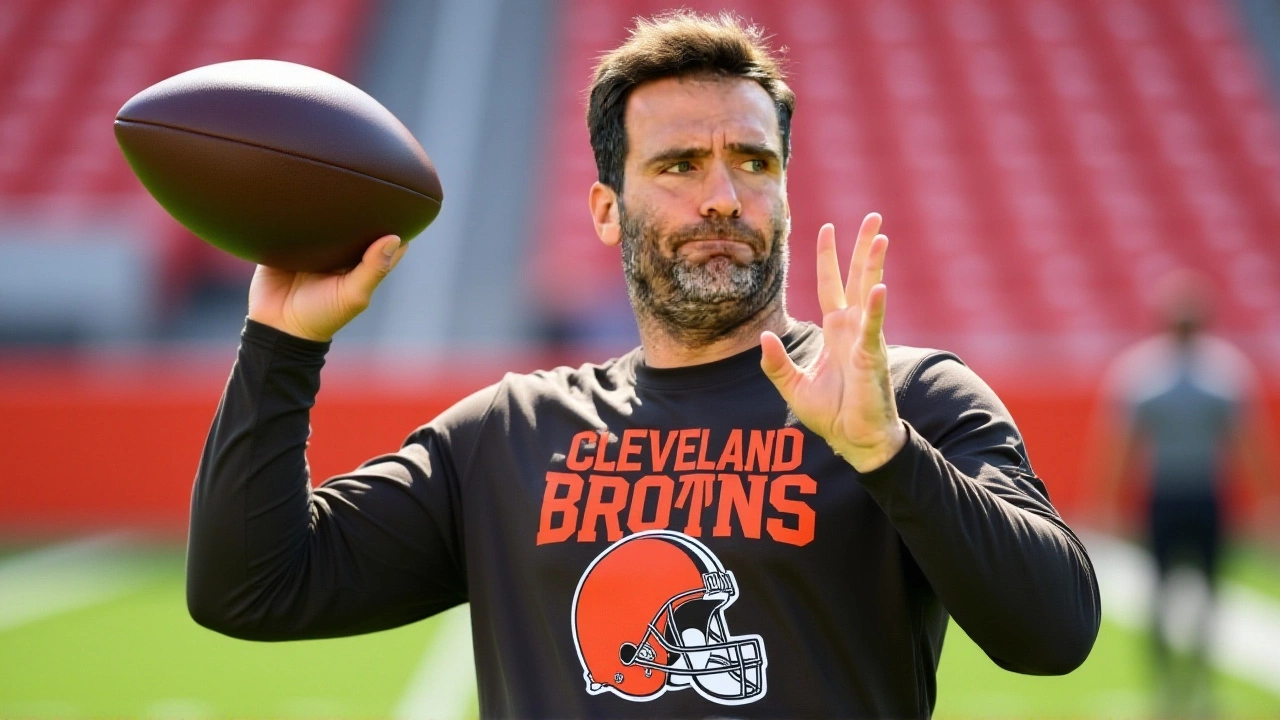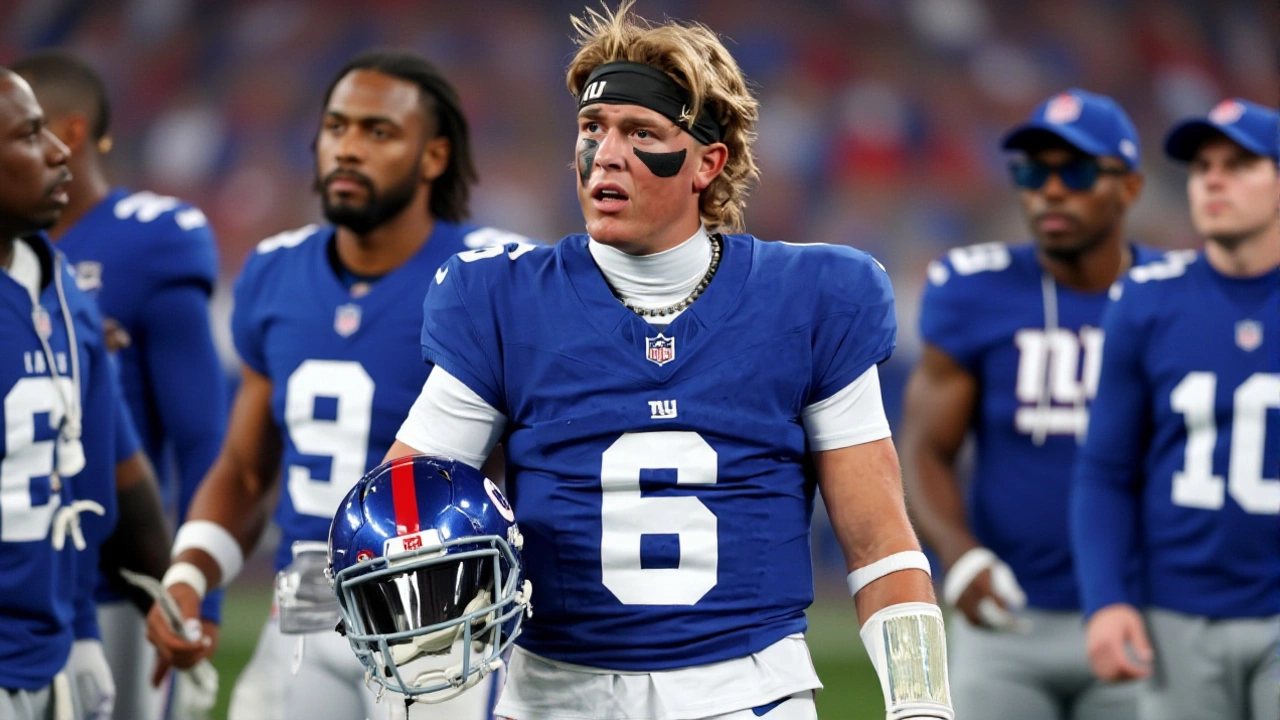Russell Wilson Visits Browns; Browns Sign Maliek Collins Post‑Flacco Trade

When Russell Wilson, free‑agent quarterback touched down in Berea, Ohio on March 13, 2025, the NFL’s free‑agency buzz reached a new pitch. The move, orchestrated by Andrew Berry, the Cleveland Browns’ general manager, signaled that Cleveland was serious about plugging a sudden vacancy at quarterback after trading veteran Joe Flacco to the Cincinnati Bengals. At the same time, the Browns bolstered their front line by locking up defensive tackle Maliek Collins on a two‑year, $20 million deal.
Background to the Quarterback Quest
Cleveland finished the 2024 season 11‑6 under head coach Kevin Stefanski but fell in the Wild Card round. The loss left the Browns with a shaky quarterback room: veteran Flacco, former backup Deshaun Watson, and a young Bailey Zappe. The off‑season salary‑cap space was tight – roughly $22.5 million remaining under the $277.6 million cap – yet the front office knew it had to act fast.
On March 12, 2025, the Browns struck a trade with the Cincinnati Bengals. In exchange for a 2026 fifth‑round pick, Cleveland sent Flacco and a 2026 sixth‑rounder to Cincinnati. The deal, confirmed by Bengals Director of Player Personnel Duke Tobin, instantly vacated a roster spot and gave the Browns an extra draft coin.
Russell Wilson’s Cleveland Visit
According to NFL insider Adam Schefter on Twitter, Wilson was scheduled to fly to Cleveland on the night of March 12 and meet with the Browns on Thursday, March 13. The Browns’ headquarters at 3355 Riverside Road in Berea became a makeshift interview room, where Wilson fielded questions about his fit in a team that had just cleared a veteran QB.
"We’re excited to have Russell evaluate our program," a spokesperson for the Browns said, echoing Berry’s sentiment that the franchise needed a proven leader. The visit lasted roughly three hours, covering the locker room, practice fields, and a quick rundown of the offensive scheme. Wilson reportedly left with a "good feeling" about the city’s fan base and the organization’s direction.
After the Cleveland meeting, Wilson boarded a flight to New York City that evening, heading to the New York Giants’ complex at MetLife Stadium in East Rutherford, New Jersey, for a February‑style interview on March 14. The Giants, still hunting for a quarterback after their own free‑agency shuffle, found themselves in a possible "stuck" scenario, as highlighted by the trade‑focused outlet BigBlueView.com.
Maliek Collins Joins the Defensive Line
While the quarterback drama unfolded, the Browns didn’t forget about the trenches. At exactly 2:00 p.m. ET on March 12, the team announced a two‑year, $20 million contract for Collins, with $12 million guaranteed. The deal, detailed on the Browns Report YouTube channel, featured performance incentives tied to sacks and potential Pro Bowl selections.
Collins, 29, brings a blend of run‑stopping grit and occasional pass‑rush moves. "We needed a veteran who could lock the line down and mentor our younger guys," Berry told the media in a post‑signing press conference. The move also signaled a strategic tilt toward strengthening the defense before the NFL Draft, scheduled for April 24‑26 in Detroit, Michigan.
Joe Flacco Trade Sparks Roster Ripple
The Flacco trade, finalized on March 11, gave the Browns a future fifth‑round pick. In return, the Bengals received Flacco’s veteran presence and a sixth‑rounder, hoping to add depth behind their own starter. While Flacco’s numbers have slipped in recent years, his experience was still valued – a point the Bengals highlighted in a brief statement.
For Cleveland, the trade cleared $5.3 million in cap space, an essential piece of the puzzle before committing to Wilson’s potential contract, rumored to be in the $30‑million‑plus range. The move also removed any internal competition for the starting role, leaving Wilson as the clear heir‑apparent if the deal materializes.

What This Means for the Browns and the Giants
In short, Cleveland now has a clear path at quarterback, a fortified defensive tackle, and an extra draft pick to leverage in April. The Giants, meanwhile, are left to negotiate with Wilson without the bargaining chip of Flacco’s former team. Analysts from Sports Illustrated note that the Giants could either swing a big contract to Wilson or pivot to a younger prospect like Caleb Williams, who is already on Berry’s schedule for pre‑draft meetings in Indianapolis.
"The Flacco move was a catalyst," said former NFL scout Mike Mayock. "It forced Cleveland to act quickly, and now they’re in a better position than they were a week ago."
Looking Ahead to the Draft and Beyond
Berry’s calendar shows meetings with quarterback prospects Jayden Daniels (LSU) and Caleb Williams (USC) on March 15‑17 in Indianapolis. Those conversations will likely shape Cleveland’s long‑term plans, especially if Wilson decides to sign elsewhere.
Regardless of where Wilson lands, the Browns will enter the 2025 draft with a solid defensive line foundation and a clear quarterback vision. The extra fifth‑round pick could be used to snag a high‑upside defensive back or be packaged in a trade to move up in the draft.
Frequently Asked Questions
How does the Flacco trade affect the Browns' salary cap?
The trade cleared roughly $5.3 million of cap space, giving the Browns room to pursue a $30‑plus‑million contract for Russell Wilson and to absorb the $20 million Collins deal without hitting the $277.6 million league limit.
What does Maliek Collins bring to Cleveland’s defense?
Collins adds three years of starter experience, a proven run‑stop ability, and a pass‑rush edge. His $12 million guaranteed salary reflects the Browns’ belief he can help improve a line that allowed 5.2 yards per carry last season.
Will the Giants be able to sign Russell Wilson?
The Giants lost a negotiating chip when Flacco left Cleveland. Analysts say the team now faces a higher price tag from Wilson, making the decision hinge on how they value a veteran starter versus developing a younger talent like Caleb Williams.
What are the Browns’ priorities for the upcoming NFL Draft?
With a solid defensive tackle locked in and quarterback options narrowing, Cleveland will likely look to bolster the secondary and add depth at wide receiver. The extra fifth‑round pick from the Flacco trade gives them flexibility to trade up for a higher‑rated prospect.
How does this series of moves position Cleveland for the 2025 season?
If Wilson signs, the Browns will have a veteran starter ready for Day 1, a reinforced defensive line, and added draft capital. Even if Wilson goes elsewhere, the roster flexibility and draft assets keep Cleveland competitive heading into the 2025 campaign.

